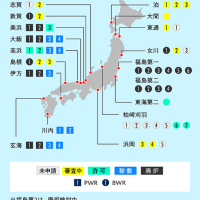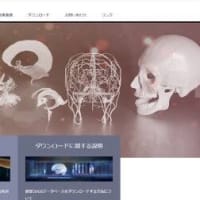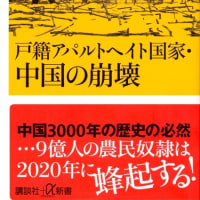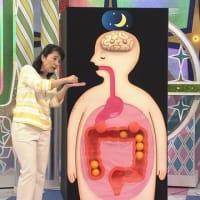09/09/2011 From the sludge of Oshu-shi, Iwate to iodine 131 .. detected in 2300Bq /kg.
09/09/2011 found that the high-concentration radioactive material "iodine 131" which far exceeds the interim standard value of food was detected from the sludge of the Maesawa sewage purification center which the city manages in Oshu-shi, Iwate which separated about 180 km from the 1st nuclear power plant of Fukushima.
Iodine 131 was born by the nuclear fission of uranium, since it is as with short half-lives as eight days, something may have occurred just before the detection day and agitation has spread.
According to Oshu Ichishita Water Supply Division, sludge extraction was performed a total of 5 times from July to August 11, and iodine 131 "was not detected" 5 times.
But, it detected in 2300Bq /kg by an extracted part on August 25.
590Bq /kg and September 6,and detected 480Bq /kg on the 31st.
It means that the numerical value which provisional regulation values which the Ministry of Health, Labour and Welfare shows, such as food and drinking water, are 100Bq/kg, and an adult is 2000Bq/kg, and exceeds it, by a baby had come out.
The city sewage division "although I consider, a cause does not turn out to be nuclear power plant relations.
It is in the situation which cannot but wait for a numerical value to fall now.
It is said that uneasy voice is also brought near from citizens, and shipment of manure materials is stopped and it is waiting for the newest results of an investigation promptly."
It will extract on the 12th next time and it will be said that a result is released on 14th or 15th.
In fact, the numerical value went abruptly up even in Tokyo which separated 200 km or more from the nuclear power plant.
It applied on August 15 and 16, the concentration of the iodine 131 contained in the sludge extracted in the sewage treatment equipment of every place went up, and it recorded 150 Bq/kg in the eastern part sludge plant (Shinsuna, Koto-ku) or the Kiyose water reproduction center (Shitajuku, Kiyose-shi).
It remained in un-detecting or a little detection at the latest.
Tokyo Wastewater Agency "a cause is not known.
Investigation is continued at 1 time of a pace at two weeks, and it is gazing at transition of a numerical value." (public-relations service division)
It is said that the results of an investigation of the sludge extracted late in August are released on September 9.
Did such [ why / now ] a phenomenon broken off from the nuclear power plant disaster about half a year occur?
Water environmental science produces special Mr. Koki Takamura in the president of former Rissho University, "iodine 131 arises in the nuclear fission reaction of the uranium 235, and it is with short half-lives.
It is explained that it is natural to think that it was newly generated at the time as for it having been detected."
Though the radioactive material discharged from the 1st nuclear power plant of Fukushima presupposes it "is not zero" a possibility of having poured at pinpoint, either, it says, "Clear explanation is not attached if such a fact is not announced at all from Tepco."
In the Tokyo Electric Power, it comments "There is no record in which the value of the monitoring post (inside of a nuclear power plant site) exceeded discharge full limits, and there is no fact which newly discharged the radioactive material" (public relations section).
[Iodine 131] It is generated by the nuclear fission of uranium and half-life is about eight days.
The radioactive material which attracts attention most in the accident of a nuclear power plant with the iodine 133 (half-life about 20 hours).
Since there is the feature gathering in the thyroid gland, it is easy to cause a thyroid cancer etc.
It is emitted in large quantities into the atmosphere, and the small child was made to generate functional disorders, such as a thyroid cancer, in the explosion accident of the Chernobyl nuclear power plant.
09/09/2011 岩手県奥州市の汚泥からヨウ素131..2300Bq/kgを検出。
福島第1原発から約180キロ離れた岩手県奥州市で、同市が管理する前沢下水浄化センターの汚泥から、食品の暫定基準値を大きく上回る高濃度の放射性物質「ヨウ素131」が検出されていたことが09/09/2011に、分かった。ヨウ素131はウランの核分裂で生まれ、半減期が8日と短いことから、検出日の直前に何かが起きた可能性があり、動揺が広がっている。
奥州市下水道課によると、7月から8月11日まで汚泥採取を計5回行い、5回ともヨウ素131は「不検出」だった。
だが、8月25日の採取分で、2300Bq/kgを検出。31日は590Bq/kg、9月6日も480Bq/kgを検出した。厚生労働省が示す食品、飲用水などの暫定規制値は、乳児で100Bq/kg、成人は2000Bq/kgで、それをはるかに超える数値が出たことになる。
同市下水道課では「原発関係とは思いますが、原因は分かりません。いまは数値が下がるのを待つしかない状況です。市民から不安の声も寄せられ、取り急ぎ、肥料原料の出荷をストップし、最新の調査結果を待っています」と話す。次回は12日に採取し、14~15日に結果を公表するという。
実は、同原発から200キロ以上離れた東京都でも数値が急上昇した。8月15日~16日にかけて、各地の下水処理施設で採取された汚泥に含まれるヨウ素131の濃度が上がり、東部スラッジプラント(江東区新砂)や清瀬水再生センター(清瀬市下宿)では150ベクレルを記録した。直近では不検出か微量の検出にとどまっていた。
東京都下水道局では「原因は分からない。2週に1回のペースで調査を続けており、数値の推移を注視している」(広報サービス課)。8月下旬に採取した汚泥の調査結果は、9月9日に公表するという。
原発事故から半年近くたったいま、なぜこのような現象が起きたのか。元立正大学長で水環境科学が専門の高村弘毅氏は「ヨウ素131はウラン235の核分裂反応で生じ、半減期が短い。それが検出されたということは、その時期に新たに生成されたと考えるのが自然」と説明する。
福島第1原発から排出された放射性物質が、ピンポイントで降り注いだ可能性も「ゼロではない」としながらも、「そうした事実が東電から発表されていない以上、明確な説明はつかない」と語る。
東京電力では「(原発敷地内の)モニタリングポストの値が排出限界値を超えた記録はなく、新たに放射性物質を排出した事実はありません」(広報部)とコメントしている。
【ヨウ素131】ウランの核分裂で生成され、半減期は約8日。ヨウ素133(半減期約20時間)とともに原子力発電所の事故でもっとも注目される放射性物質。甲状腺に集まる特徴があるため、甲状腺がんなどを引き起こしやすい。チェルノブイリ原子力発電所の爆発事故では大気中に大量に放出され、幼児に甲状腺がんなどの機能障害を発生させた。




















※コメント投稿者のブログIDはブログ作成者のみに通知されます